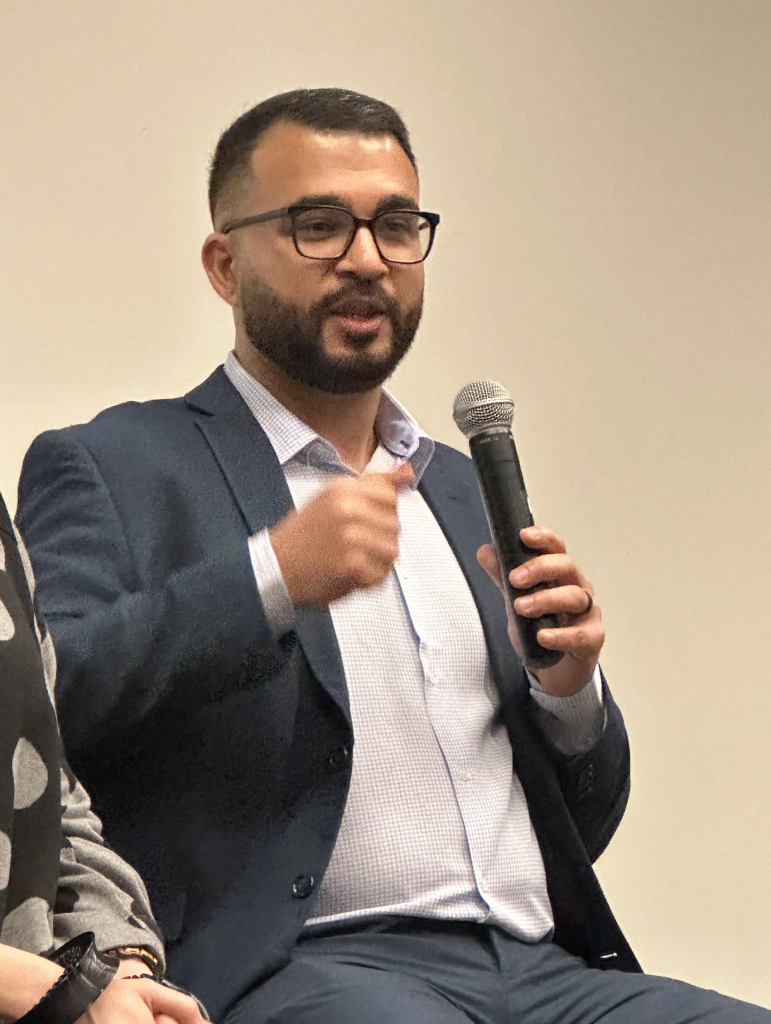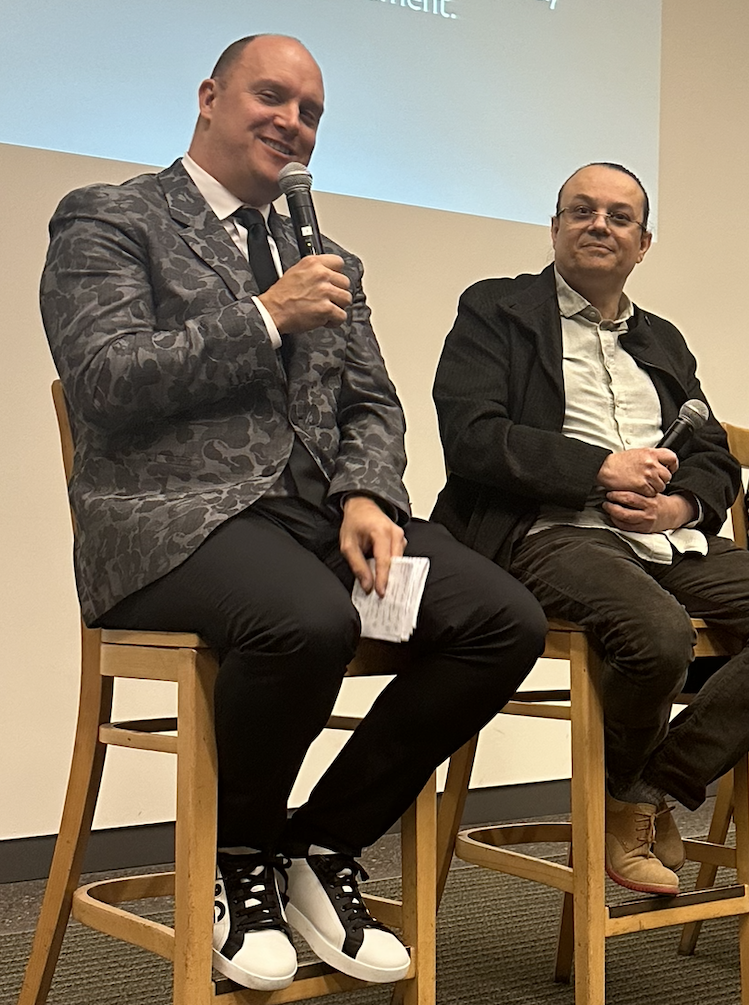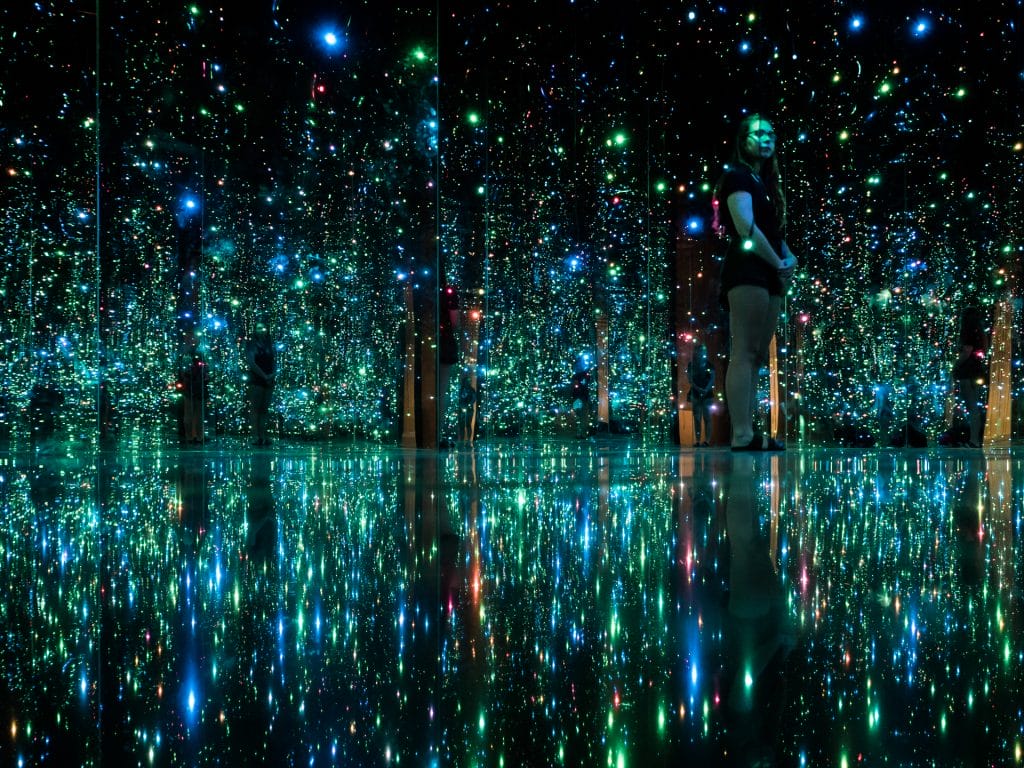(Left to right: Jeremy Mikolajczak, Director and CEO of the Phoenix Art Museum, Artist Yves Amu Klein, and Independent Art Consultant Anna Vivette, Omar Abdallah, Web3 Attorney at Rose Law Group.)
By Madelaine Braggs | Rose Law Group Reporter
The Phoenix Art Museum is looking towards the future, with an NFT panel event featuring Rose Law Group, a globally recognized Web3 legal team.
Digital art collections in the form of NFTs have captured the intrigue of million-dollar investors, creating a new virtual reality marketplace for blockchain artists. As businesses and organizations move towards metaverse platforms like Decentraland, many museums are now considering how they can also create immersive experiences or profit from metaverse fundraising opportunities.
The museum’s club of donors, Circles of Support, celebrated their holiday party with an innovative panel featuring Omar Abdallah, Web3 Attorney at Rose Law Group, Jeremy Mikolajczak, Director and CEO of the Phoenix Art Museum, Artist Yves Amu Klein, and Independent Art Consultant Anna Vivette.

In an effort to bridge the gap between traditional collections and the ultramodern concepts of blockchain technology, the panel presented a crash course on digital assets, real life applications for art institutions, and the joys of being an artist in a new-age revolution of digitized art.
Simply stating, Abdallah says metaverse platforms are like the new wave of social medias, where people build communities online in an immersive gaming like experience. But the cryptocurrency behind the clothes your digital avatar wears and the art hanging in your virtual home are very real.
“A lot of people will describe the metaverse to be a digital world where people can interact and participate in more immersive experiences, whether with VR headsets or otherwise. Some say it’s a twin to the real world.”
He goes on to explain, “With social media, you can go on to these spaces, create content, share content and I think the metaverse is the next iteration of that, but much more immersive.” Rather than just being on your phone, it will involve a virtual realm that goes beyond what a user can do in their phone.”

Museums have a unique opportunity to incorporate NFT exhibits and attract the next generation of art lovers and aficionados.
For example, museums will sometimes showcase borrowed pieces of art, a museum can share art with another museum of art. The purchaser of an NFT could theoretically send that asset to the Phoenix Art Museum to display. Sure, the museum could just Google an image of that NFT, download it and put it up on a display, but Abdallah says, “There’s a certain element of novelty to having the actual NFT on display. Because of the permanence of the blockchain transaction history, anyone could verify that the one on display in PhxArt is an original piece that sold for millions of dollars.”
Another allure to blockchain technology is the tighter level of security for digital assets. The Web3 Lawyers says, “Smart contracts aren’t written documents. It’s code that’s created by a blockchain developers. It’s very interesting how the developer can write terms into the code. The terms can define when an NFT is sold, how the funds should be routed. If there are subsequent transactions, should there be royalties and where should those royalties go?”
Abdallah says one common mistake NFT artists make is assuming that the terms written in the smart contract are legally enforceable. “Just because you created this NFT, and we can verity through blockchain that you are the originator, we should register a trademark for you. We should still define the intellectual property rights in the terms of conditions for your website where you’re selling your NFTs, where the purchaser of your NFT can go to check and understand what rights they have associated with the NFT they purchased. Can they commercialize the art they just purchased or can they only display it? Can they put it on merch and sell it or can they not do anything with it?”
Even though these things can be written in the smart contract code, you still need legal support.
New Mediums of Art
While critics sometimes say the rendering quality of NFT art or graphics from metaverse platforms are lower than other popular massive multiplayer games, Klein believes that’s just growing pains. “We could meet virtually from wherever in the world, this visualizes what the technology is going towards and as time goes on the representation will look more realistic, whether it looks like you or like a fantastical creature. You will create and entire virtual world where you can make transactions and have a completely virtual life.”
Klein studied building robotic sculptures, so going into digital artwork felt very natural progression, but as an “astro-photographer,” he had issues proving to customers that his art was authentic. Blockchain technology (the foundation of NFTs and metaverses) solved that problem.
“NFTs kind of crested that stamp of authenticity. The art now is recognized in the blockchain forever and as long as the blockchain exists, anyone can go and verify whether this is authentic.”
Vivette says the archival theory of blockchain adds even more artistic value to the story of collectors and owners of digital collections. “The story of where these pieces have been, gets rid of the opacity that shrouds physical works we’re used to seeing in the museum. I’m really excited about seeing the full stories of these pieces and how they move through our history.”
Why should this matter to artists? Vivette says it’s obvious. “Artists have always been the people who have boldly gone to places we’ve never been before and experimented. As long as there’s been technology, artists have always moved alongside tech. These are works of art we can experience through play… and understand more deeply what these pieces mean. That’s very exciting to me.”
Innovation & Forward Direction

Mikolajczak began heading the Phoenix Art Museum this year and admits art institutions are trepidatious to switch things up. “One of the challenges to museums is we are archivists in the sense we’re not designed to adapt to the latest tech. It took museums a century to actually recognize photography as an art form. It was seemed as a technology, not as an art form. It’s interesting we’re not fast and it takes time for us to accept new mediums.”
‘The beginning of digital art dates back to the 1860’s, as early conceptual drawings… the medium might be new but this is not new to us. The art is still there, the artistic practice is still there and now museums are catching up.” He says knows of two museums currently developing the ability to make transactions with cryptocurrency and several others investing millions into NFT collections.
The idea of transforming classic art into digital art also brings up questions surrounding copyright and whether or not changing any aspect of an original piece of work or exhibit tarnishes the artists vision. For example, “If it’s a basic lighting structure to a digital structure, are we changing that piece? Does it affect the intention of the artist? It’s a big conversation to have.”
Mikolajczak says museums have to evolve as an industry and organization to absorb this. But it wouldn’t be the first time Phoenix Art did something innovative that was a hit amongst the public. One of the most recognizable exhibits at the museum, ‘You Who Are Getting Obliterated in the Dancing Swarm of Fireflies,’ by Yayoi Kusama, was “considered tech art” when installed in 2005.

Phoenix Art is thinking ahead, currently hiring young digital curators. Mikolajczak says they’re excited to bring an augmented reality exhibit in Spring of 2023. “Methuselah.” by the Cuban-born artist Reynier Leyva Novo, virtually reproduces the 6000-mile transnational migratory journey of a single monarch butterfly, tracking its travel from southern Canada across the United States to Mexico. Embodied through the life of a virtual avatar, the epic journey is hosted and reproduced in real time on a specially designed, open-access, dedicated website.
“We are built to be stewards of art culture and stories. This is another way we archive or index it.”
Jeremy Mikolajczak, Director and CEO of the Phoenix Art Museum








